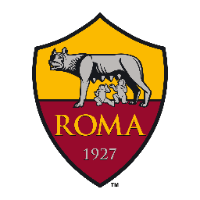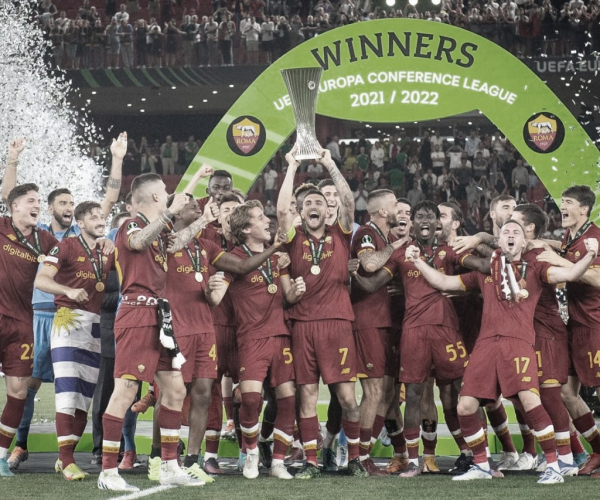
Roma

1927 Roma
Associazione Sportiva Roma, commonly known as AS Roma, is one of the most iconic soccer clubs in Italy and the world. Founded in the summer of 1927 by Italo Foschi, Roma was born from the merger of three teams: Roman FC, SS Alba-Audace and Fortitudo-Pro Roma SGS. Since then, the team has developed a rich history, marked by successes and challenges, becoming a symbol of the city of Rome and winning the hearts of millions of fans.
The first steps in Italian soccer
The foundation of AS Roma in 1927 marked the beginning of a new era in Italian soccer. The union of three teams from the Italian capital aimed to create a strong club that could compete with the northern Italian giants. From the outset, Roma established itself as a competitive team, showing its determination and passion for the game. This initial period laid the foundations for what would become a rich sporting history, characterized by struggle and triumph.
The team's first official match demonstrated its commitment and ambition. Playing at Campo Testaccio, their first home, Roma began to forge their identity, winning the hearts of the local fans. This stadium, although not as large or modern as those that would come later, was the scene of many of the club's early successes. The relationship between the fans and the team quickly grew stronger, creating a solid base of support that endures to this day.
In the years following its founding, Roma faced the challenges of establishing itself in Serie A, the elite competition of Italian soccer. The early years were up and down, but each season served as a lesson for the team, which continued to grow and improve. The 1930s saw the team consolidate its place in the top flight, competing strongly against more established rivals and beginning to forge its legend in Italian soccer.
The conquest of the first Scudetto in 1942 was a milestone in Roma's history. This triumph not only elevated the club's status within Italian soccer but also provided a moment of joy and pride for the city of Rome during a time of uncertainty and difficulty due to World War II. This championship demonstrated the team's ability to overcome adversity and further united the fans around their love for Roma.
This early success was the beginning of a long history of struggle and passion. Throughout the following decades, Roma continued to face the challenges of Italian soccer, always striving to stay at the top. Although titles did not always come easily, the team's fighting spirit and connection to the city of Rome remained strong, laying the foundation for future successes and the eternal dedication of its supporters.
A home called the Stadio Olimpico
With the move to the Stadio Olimpico in the 1950s, AS Roma began a new chapter in its history. This move not only meant an increase in capacity for the fans but also greater visibility and prestige for the club. The Stadio Olimpico, with its rich history and its role in the 1960 Olympic Games, became a symbol of Rome's and Italy's sporting greatness.
The 1950s and early 1960s was a period of transition for Roma, with the team adapting to its new home and facing competition from strong teams both domestically and internationally. During these years, Roma worked hard to build a team that could compete at the highest level, which often involved rejuvenating the squad and adapting new tactics.
The 1960s and 1970s saw Roma establish itself as one of the strongest teams in Italy, even though titles were elusive. The club reached several cup finals and remained consistently at the top of the Serie A table, demonstrating its quality and ability to compete with the best. This period also saw the development of young talent, many of whom would go on to become club legends.
The 1980s represented a renaissance for Roma, culminating in the conquest of the Scudetto in the 1982-1983 season. This success was the result of years of hard work and planning, and demonstrated the club's ability to build a winning team. The league victory not only brought joy to the fans but also reaffirmed Roma's place among the elite of Italian soccer.
The Stadio Olimpico continued to be the heart of Roma's soccer activity, filling up every week with passionate fans who came to support their team. The unique atmosphere of the stadium, with its blend of history, culture and footballing passion, became a distinctive element of Roma's home games. This bond between the team and its stadium has been instrumental in creating memorable moments and strengthening the club's identity.
The era of the gladiators
The turn of the millennium brought with it one of the most successful eras in AS Roma's history, marked by the conquest of the Scudetto in the 2000-2001 season. This team, led by the likes of Francesco Totti and coached by Fabio Capello, captured the imagination of the fans and were nicknamed "the gladiators" for their fight and determination on the pitch. This title was particularly significant as it came after a period of 18 years without winning the league, reaffirming Roma's status as one of the greats of Italian soccer.
During this time, Roma also put in notable performances in European competitions, reaching the final stages of the UEFA Champions League and demonstrating their ability to compete at the highest continental level. Although the team failed to capture a European title, these runs deepened the club's international reputation and raised its profile among the giants of European soccer.
The presence of Totti, who became the top scorer and the player with the most appearances in the club's history, symbolized the dedication and commitment to the Roma shirt. His leadership on the field and his ability to score crucial goals at important moments were fundamental to the team's success during this era. Totti was not only an exceptional player but also a die-hard Roma fan, making him the embodiment of the club's spirit.
In addition to Totti, Roma had a number of outstanding players during this era, including Gabriel Batistuta, Vincenzo Montella and Daniele De Rossi. These players brought skill, passion and a winning mentality to the team, contributing significantly to the club's success both in Italy and Europe. The combination of local and international talent strengthened the team and made it more competitive on all fronts.
The gladiator era was not only characterized by success on the field but also by the creation of an indestructible bond between the team and its fans. Triumphs and defeats were shared with intense passion, and the Stadio Olimpico became a hotbed of excitement every time Roma played. This connection between the club and its fan base is a testament to Roma's unique identity and its special place in the heart of the city.
A new millennium, new challenges
With the start of the new millennium, AS Roma faced increasing competition in Serie A, with teams such as Juventus, AC Milan and Inter Milan strengthening their squads to challenge the club's dominance. This era of intense rivalry forced Roma to adapt its strategy both on and off the field, seeking innovative ways to remain competitive at the top of Italian soccer.
The club's management focused on financial sustainability and investment in young talent, a strategy designed to secure the team's long-term future. Through the club's academy and smart recruitment, Roma was able to discover and develop the next generation of soccer stars, ensuring that the team would remain competitive for years to come.
On the field, Roma continued to fight for Serie A titles, often coming close but failing to capture the coveted Scudetto. However, the team did achieve success in the Coppa Italia and Supercoppa Italiana, demonstrating its ability to compete at the highest level and remain one of Italy's top teams.
At the European level, Roma faced the challenge of overcoming some of the continent's biggest clubs in the UEFA Champions League and Europa League. While these tournaments offered moments of glory, they also exposed the difficulties of competing against teams with greater financial resources. Nevertheless, Roma managed to make some memorable runs in Europe, earning the respect of clubs and fans across the continent.
The dedication of Roma's fans never wavered during this period, with the Stadio Olimpico continuing to be a bastion of support for the team. The passion and loyalty of the club's supporters were a constant source of motivation for the players, demonstrating the deep connection between the team and its city. This symbiotic relationship is a testament to Roma's unique identity and place in Italian soccer culture.
As AS Roma moves into the 21st century, the club continues to face new challenges and adapt to an ever-changing soccer landscape. With a rich history behind them and a passionate fan base by their side, Roma continues to strive for success, keeping alive their fighting spirit and commitment to excellence in soccer. Roma's story is one of passion, determination and resilience, a saga that continues to inspire generations of fans and players alike.








































